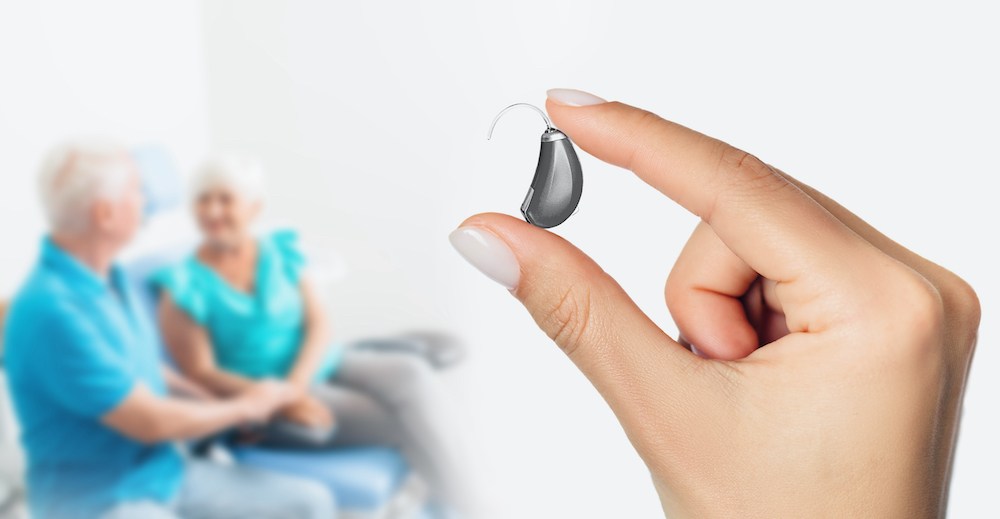How Is Hidden Hearing Loss Diagnosed?
Sometimes, hearing loss doesn’t show up the way you might expect. You

By: admin | September 25, 2025
Sometimes, hearing loss doesn’t show up the way you might expect. You may hear just fine in quiet settings but find yourself struggling to follow conversations in noisy places like restaurants or social gatherings. It might not seem like a big deal at first – maybe you chalk it up to having an off day or being tired. But if this keeps happening, it could be a sign of something more than just background noise getting in the way.
This type of subtle hearing difficulty is often linked to what’s known as hidden hearing loss. Unlike more obvious hearing changes, this kind doesn’t always show up on a standard hearing test. Still, it can affect how clearly you understand speech and interact with others in everyday life. So, what is hidden hearing loss and how is it diagnosed?
Hidden hearing loss is a type of hearing difficulty that doesn’t always show up on a standard hearing test. People with this issue often hear well in quiet environments but struggle to follow conversations in noisy places. It can feel confusing – you know you’re hearing sounds, but they don’t seem clear or easy to understand, especially when there’s background noise. This can lead to frustration in everyday situations like group conversations, busy restaurants or crowded public spaces.
The term hidden is used because the problem isn’t with your ears’ ability to detect sound, but with how your brain processes it. Hidden hearing loss is thought to be connected to damage in the pathways between your inner ear and your brain. These pathways help sort and organize sound, especially speech. When they’re not working properly, your brain has a harder time picking out voices from background noise. This explains why you might hear that someone is talking but can’t clearly understand what they’re saying.
Because standard hearing tests focus mostly on how well you hear tones at different pitches, they might not catch this type of problem. That’s why someone with hidden hearing loss might pass a hearing test but still feel like something isn’t quite right. If you’re experiencing this kind of difficulty, it’s important to talk to a hearing specialist. They can perform more detailed testing and help figure out what’s going on. Understanding this type of hearing loss is the first step toward finding the right support and solutions.
Sound enters your ear as vibrations, which cause your eardrum to move. These vibrations continue through the middle ear to the inner ear, where they are turned into electrical signals. Your brain then processes these signals and identifies them as specific sounds. This is how you’re able to recognize different noises, like a bird singing or a car horn. Having a basic understanding of how hearing works can help explain why changes in this process might make it harder for some people to hear clearly.
While understanding hearing loss might seem straightforward, it’s crucial to realize that not all types of hearing loss are easily detectable. To identify hidden hearing loss, it’s important to pay attention to your experiences in different settings. If you notice difficulty understanding speech in places with lots of background noise – like busy restaurants or crowded events – this could be an indication that you’re dealing with this type of hearing loss.
Hidden hearing loss doesn’t mean that your ability to hear has disappeared completely; rather, it means that the quality of the sounds reaching your brain may be compromised. The key here is recognizing these subtle changes and discussing them with a hearing specialist who can provide guidance and potential solutions.
After understanding the role of hair cells in our hearing process, it becomes clear that standard tests might not always provide a comprehensive picture of our hearing health. This is where audiogram analysis comes into play. An audiogram is a graph that displays the results of your hearing tests, showing how well you can hear different frequencies and volumes.
Audiogram analysis goes beyond simple pass or fail results. It allows hearing specialists to study your ability to hear across different frequencies, giving them a more detailed understanding of any potential issues. For instance, you might have normal hearing at lower frequencies but experience difficulties with higher ones – something that wouldn’t necessarily be evident from standard tests alone.
This method also helps identify patterns over time, tracking any changes in your hearing abilities and potentially catching issues early on before they become more serious. If you’ve been experiencing problems despite normal test results, an in-depth audiogram analysis could provide valuable insights into your unique auditory profile.
Including more advanced testing methods along with standard hearing tests can provide a clearer picture of your overall hearing health. Since everyone experiences sound differently, it makes sense to use tools that can better reflect those individual differences. Taking this broader approach may lead to a more accurate understanding of how well you hear in real-world situations.
Have you ever wondered if there’s a more precise way to detect hidden hearing loss? Unlike standard hearing tests, which are typically conducted in quiet environments, speech-in-noise tests are designed to assess your ability to understand speech in noisy situations. This is particularly relevant for identifying hidden hearing loss, as one of the main symptoms is struggling to follow conversations in loud settings despite having normal results on traditional hearing tests.
Speech-in-noise tests work by having you listen to sentences or words with varying levels of background noise. The aim is not only to gauge how well you can hear the speech but also how accurately you can comprehend it amidst the noise. By adding this layer of complexity that mimics real-life scenarios, these tests provide a more comprehensive evaluation of your auditory capabilities.
While hidden hearing loss might not always show up on standard tests, that doesn’t mean it’s impossible to detect. With tools like speech-in-noise tests and awareness of your experiences in different environments, your hearing specialist can help to provide proactive steps towards managing it effectively.
The otoacoustic emissions (OAE) test is another important tool used to evaluate hearing. This helps hearing specialists check the function of tiny hair cells in the inner ear. These cells play a key role in how the ear responds to sound, and their performance can provide valuable insight into overall hearing ability. The results from this test can help identify issues that might not show up in a basic hearing screening, especially in the early stages of hearing loss.
The OAE test works by introducing a series of soft clicks or tones into your ear through a small probe. If your hair cells are functioning properly, they will respond by emitting a sound back, which is then picked up by the probe. These otoacoustic emissions can provide critical information about potential damage within your inner ear that might not be apparent from standard hearing tests.
By incorporating this advanced testing method into our understanding of hearing health, a hearing specialist can better detect issues like hidden hearing loss and take appropriate action to manage them effectively.
Auditory brainstem response (ABR) testing is a helpful tool in identifying hidden hearing loss. Unlike standard hearing tests that ask you to respond to sounds, ABR measures how your hearing nerves and brain respond to those sounds. Small electrodes are placed on your head and ears to record your brain’s activity when clicking sounds are played through earphones. This gives hearing specialists a clearer picture of how well sound signals are being transmitted from your ears to your brain, even if you’re hearing well in quiet settings.
This kind of test is especially useful when someone reports trouble hearing in noisy places but passes a regular hearing test. In cases of hidden hearing loss, the issue might lie in how the brain processes sound, not just how the ears pick it up. ABR testing can catch these subtle differences, making it easier to understand what’s really going on. With more accurate results, hearing specialists can recommend solutions that better match your needs.
Understanding your hearing health can often seem difficult. With the help of professional consultation and a range of treatment options, we can work together to create a clearer picture of your auditory landscape. When you start experiencing difficulties with sound perception, especially in noisy environments, it’s important to consult with a hearing specialist. They have the expertise and tools necessary to assess your situation accurately and provide guidance tailored specifically for you. This could involve more detailed tests that go beyond standard evaluations or exploring various treatment options like hearing aids and assistive listening devices.
Treatment is not one-size-fits-all when it comes to hearing loss. It’s about finding what works best for you based on your unique experiences and needs. This could mean using devices that amplify sounds while reducing background noise or implementing strategies to protect those delicate hair cells in your inner ear from further damage.
Improving hearing health is a collaborative process between you and your hearing specialist – one that requires open communication about your experiences and concerns. So, if you find yourself struggling to hear, talk with your hearing specialist.
Living with hidden hearing loss can make certain situations, like being in a crowded room or a busy restaurant difficult. Assistive listening devices (ALDs) are one option that may help improve how you hear in these types of environments. These tools are designed to work alongside your hearing system to reduce background noise and make speech clearer. For many people, they offer a practical way to manage the effects of hidden hearing loss during everyday interactions.
ALDs work by amplifying the sounds you want to hear, like someone’s speech, while reducing background noise. They come in various forms like personal amplifiers, FM systems and even apps for your smartphone. For instance, a personal amplifier can increase the volume of sounds closest to you, making it easier to follow conversations in crowded places.
These devices don’t replace the need for regular check-ups with your hearing specialists. Instead, they serve as valuable aids that complement other management strategies. By using ALDs alongside other approaches like regular hearing tests and protective measures against excessive noise exposure, you can take an active role in managing your hidden hearing loss and improving your quality of life.
Understanding your hearing health can play an important role in how well you manage it over time. If you’ve noticed that following conversations in noisy settings feels harder than it should – especially when standard hearing tests show no issues – it may be time to look deeper. Hidden hearing loss isn’t always obvious, but that doesn’t mean it should be ignored. Taking the next step toward answers can help you find useful tools and strategies to improve your listening experience. Talking with a hearing specialist is a good place to start.
Our team at Crystal Clear Hearing Center is here to help you understand and improve your hearing health. We offer personalized consultations and advanced diagnostic methods tailored specifically for your unique needs. Our clinics in Blue Jay & Placentia, CA can be reached for more information or to schedule an appointment.
Every individual’s experience with sound perception is unique and deserves a personalized approach. By acknowledging potential issues like hidden hearing loss and seeking professional guidance when needed, we can take proactive steps towards enhancing our quality of life.

Sometimes, hearing loss doesn’t show up the way you might expect. You
By: admin | September 25, 2025

When hearing fades, relationships change. Hearing loss creates barriers
By: admin | April 24, 2025

If you’ve ever heard a sudden high-pitched whistling sound coming
By: admin | March 21, 2025
